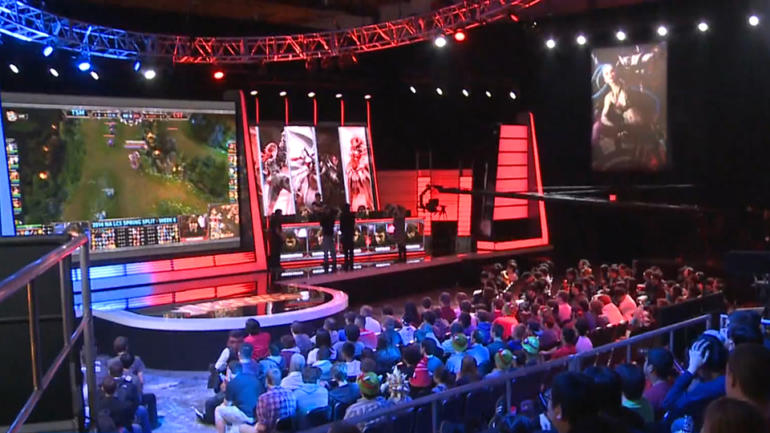The esports industry is growing by leaps and bounds with total global revenues expected to surpass one billion dollars this year.
And now the esports market is making its way into academia.
In more than a dozen U.S. states, esports is part of the athletics department in high schools, with students playing on competitive teams.
And recently, one university is incorporating esports into the classroom.
CGTN’s Frances Kuo explains.
Nestled in a scenic valley in Virginia, Shenandoah University is carving its own path.
“It’s kind of fun going off trail, there’s no trailblazers right now,” said Joey Gawrysiak, esports Director at Shenandoah University.
In one classroom on campus, they’re discussing Activision Blizzard, Overwatch 2 and the revenue from skins being split.
It’s the language of esports, a field now intersecting with higher education.
This fall, Shenandoah University debuted its academic esports program, one of the few in the world.
Christopher Scroggins is the main instructor.
“We’re maybe two people of maybe 10 in the country, because a lot of academics don’t have an eSports background.”
Joey Gawrysiak, a former competitive gamer himself, is the director of the esports program.
He said the major is not meant to teach students how to play video games.
“They’re not here to compete, they’re here to study esports to work in the field,” said Gawrysiak.
It’s a field that’s flourishing.
Newzoo, a marketing research firm, said revenue from the global esports market is expected to rise nearly 30 percent year to year.
There’s also big money for professional gamers though few make it big.
But Gawrysiak said there are plenty of job opportunities behind the scenes, and that’s where Shenandoah comes in.
“Whether it’s working on the marketing side for an esports firm or organization,” explains Gawrysiak. “Community relations directing, social media, that’s pretty big for esports organizations. There’s the management side, learning how to financially be responsible for an organization, these are firms with multi-million dollar budgets.”
Students aren’t just learning inside the classroom. Part of the program also involves a converted World War Two armory.
The 145-square-meter facility was transformed and designed to mimic a professional esports arena.
It has a dozen gaming consoles and a capacity for 75 spectators.
The arena serves as a place for Shenandoah’s varsity esports players to practice and students to get hands-on experience.
“Students in the major can learn lessons in the classroom and then do things in like a living lab,” said Gawrysiak. “They can come down here and run an event in here, they can work on sound systems and lighting to see how that impacts an event.”
Caitlyn Graulau is one of Shenandoah University’s 16 students pursuing an esports major.
She hopes to work as a freelance journalist in the field.
“There’s so much potential here, and I wanted to be a part of that,” said Graulau. “eSports, it’s new, it’s fresh, it’s a huge industry that’s continuing to grow, and I think it’s worth pursuing because soon enough, like in the next two or three years, there’s going to be huge demand for those types of jobs.”
The program also attracted Jason Anderson who’s been doing competitive gaming for 5 to 6 years.
He’s striving to be a CEO someday.
He said the stigma of esports as just people playing video games will eventually subside.
“I’ve always dealt with the judgment, but I’ve always been the guy that’s like “I don’t care, I’m enjoying what I’m doing.'”
“I know, it’s new, it’s different, it’s outside the box, it’s a little scary, it’s a little risky,” said Gawrysiak. “This is real, it’s here, and it’s happening. Let’s not fight it, let’s embrace it and use it as an educational opportunity for our kids to get them a good college experience because that’s what they’re passionate about.”
Patrick Rishe discusses esports academic programs and the industry’s growing popularity
CGTN’s Nathan King talks with Patrick Rishe, Director of the Sports Business Program at Washington University in St. Louis, about e-sports academic programs and the industry’s growing popularity.
 CGTN America
CGTN America

